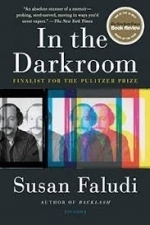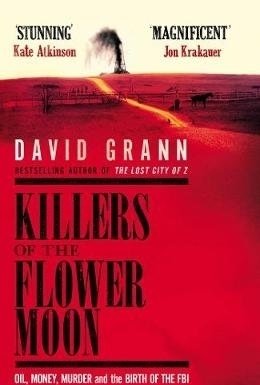
In the Darkroom
Book
From the Pulitzer Prize-winning journalist and best-selling author of Backlash, an astonishing...
Biography memoir social issues

Charles-Etienne Brasseur de Bourbourg, Premier Grand Mayaniste de France: 2015
Book
Two hundred years ago, on September 8, 1814, in the northern French city of Bourbourg, a boy was...
Jubal Early: Robert E. Lee's Bad Old Man
Book
In Jubal Early: Robert E. Lee's Bad Old Man, a new critical biography of Confederate Lieutenant...

The Real Hornblower: The Life and Times of Admiral Sir James Gordon
Book
First published in 1997, this timely release offers a comprehensive and engaging account of the life...
After being out of print for sixty years, <i>Ilsa</i>, one of Madeleine L’Engle’s first novels has been republished, giving readers the chance to discover the rare, little known story. L’Engle is recognized as the author of <i>A Wrinkle in Time</i> and a selection of young adult novels, however <i>Ilsa</i> is an example of L’Engle’s ability to pen a much darker story.
Fundamentally a love story, <i>Ilsa</i> is set in America during the first half of the 1900s. Whilst this gives it an historical context to current readers, it would have been the present day when the story was originally published. The narrator, Henry Porcher, first meets the titular character at the age of ten, shortly before his family whisks him away to temporary accommodation many miles away. In this brief introduction, Henry falls in love with Isla, despite her being three years older than him. From this point on, Henry’s mind and heart are filled with thoughts about Ilsa, and is saddened that his family possess antagonistic opinions about her and her father.
Henry and Ilsa come from entirely different backgrounds. The Porcher’s are a large family with an air of superiority, a stark contrast to the humble lodgings of Ilsa and her naturalist father, Dr. Brandes. Whilst Henry’s parents look down on Dr. Brandes, Ilsa views the Porcher’s as rich and biggity. Yet, Henry and Ilsa are happy to be friends – a <i>Romeo and Juliet</i>-esque relationship, unfortunately with romantic attraction only falling on one side.
Despite his hopes, Henry realizes that Ilsa will never be his. By the age of twenty-four, he already feels like a failure, yet he continues to shadow and worship Ilsa without a care to how his life turns out. Henry painstakingly witnesses Ilsa’s transformation from girl to woman, marrying a man who does not deserve her, becoming a mother, a widow, and finally suffering health wise. Forfeiting his chance of career and marriage, Henry experiences the darker side of love, and pays the price of unrequited love.
For a story about love,<i> Ilsa </i>contains no romance or passionate scenes, and once Henry loses his childhood naivety, it begins to become rather dull. The reader will initially anticipate a happy ending, but the lack of a climax reveals that this will not be forthcoming. <i>Ilsa</i> is far more interesting at the beginning of the novel, a time when anything could happen, but becomes increasingly disheartening as it goes along.
Having not read the celebrate author before, I have no idea how <i>Ilsa</i> compares to the more popular of L’Engle’s novels. Personally, I am not impelled to seek out any of her other books, however that does not mean I deem<i> Ilsa</i> terrible. For fans of L’Engle, this book is certainly worth seeking out, particularly this edition, which contains a brief biography and selection of photographs of the author throughout her life.

Man of Steel and Honour: General Stanislaw Maczek: Soldier of Poland, Commander of the 1st Polish Armoured Division in North-West Europe 1944-45
Book
This is a biography of one of the most undervalued commanders of the Second World War, General...
I do not agree with the main argument of this biography: that William Shakespeare was, in fact, only a pen name for Edward de Vere, the Earl of Oxford. No. I do not agree with this claim, like so many other Shakespeare scholars and lovers because the "facts" put forth are just very thinly stretched ideas and concepts that cannot be proven.
This book, instead of pushing me to think about how this fact could even possibly be true, is more about the life of Edward de Vere and how some of the circumstances in his life would be able to loosely connect to the plays Shakespeare had written. In tying in the plays, Anderson thinks he is making a stronger claim for his argument, but is honestly just trying to connect things that are unalike to "prove" what he is thinking. As an English major, I don't really like that way of thinking much.
Most of what he was trying to argue could have been left out and, instead, just have the appendices left in there. In the approximately sixty pages of the four appendices, he stated what over three hundred pages could not. No, I do not agree with the argument he is making, but it seems like it is stronger and more coherent in the appendix.
I want to point out a specific quotation from the Appendix A on page 381 to make a point about this book. It states: The thesis of this book, the "Oxfordian" proposition that Edward de Vere was Shake-speare, is a theory built on circumstantial evidence. There is no single "smoking gun" document that leads one inexorably to the conclusion that de Vere wrote Hamlet, King Lear, the Sonnets, etc." I understand that it is difficult to try to prove a theory that many argue against (myself included), but basing your argument solely on circumstantial evidence is not the way to go. It makes the argument, at least to me, seem less realistic and, in all honesty, difficult to agree with. If you cannot prove someone is guilty solely based on circumstantial evidence, you should not try to prove a complex argument that a famous playwright was not a real person, but, in fact, a pseudonym for another historical figure around the same time.
The "facts" that de Vere's life has similar qualities to the plays written by Shakespeare leading to the thought that de Vere, himself, is Shakespeare is a stretch, and not a convincing one at that.
Overall, I did not enjoy this book and I did not find it convincing at all. It felt more like a history lesson about the background of Edward de Vere rather than any kind of argument towards the idea that he could have been Shakespeare.
In my heart of hearts, I will always believe that William Shakespeare was, in fact, a real man by the name of William Shakespeare, not some made up name for a man who wanted to keep his private life separate from the public.
Hazel (1853 KP) rated Killers of the Flower Moon: The Osage Murder and the Birth of the FBI in Books
Dec 7, 2018
It is well known that throughout history, facts have been omitted from history books. Written accounts of events ostensibly make important figures and countries appear to be in the right, whereas reality reveals otherwise. One such exclusion is the fate of the Native Americans inhabiting the southern states at the beginning of the 1900s. Children are brought up to believe the stories that “Red Indians” are bad and the cowboys are good, but this was unlikely the case. David Grann has researched into a particular period of Native American history that most people may never have heard of.<I> Killers of the Flower Moon</I> reveals the horrors innocent people faced at the hands of perfidious criminals.
The majority of the book is written as a third person narrative, recounting the lives of some of the members of the Osage Indian Nation in Oklahoma. White people, believing themselves to be superior, had forced the natives off their homelands and onto rocky, unwanted ground. What they did not anticipate, however, was the abundance of oil residing beneath the surface. The Osage went from being oppressed to being the wealthiest people in the state. Full of avarice, the whites were not going to let them get away with this fortune for long.
David Grann takes a particular interest in Mollie Burkhart, an Osage member with a white husband. Mollie had three sisters, but within a few short years they were all dead, and so was her mother. Believing they had been murdered, Mollie fears for her life. Other Osage members were also being killed, as well as those who tried to investigate the spreading slaughter. However, the case remained stubbornly unsolved.
Nevertheless, there was still hope for Mollie after the arrival of Tom White, an agent of the soon to be known as Federal Bureau of Investigation (FBI). Determined to get to the bottom of the so-called Reign of Terror, Tom and his team carefully analyse the behaviours and motives of the disingenuous citizens, narrowing down the suspects until eventually finding their duplicitous killer.
Learning about this unknown period of history is eye opening and offers a completely new view on the relations between whites and Native Americans. It was a time of prejudice and racism, not unlike the attitude towards black people emphasised with the civil rights movement in the mid-1900s. Greed was a significant motivator, particularly where making money was involved. But, David Grann does not stop here.
The final section of <i>Killers of the Flower Moon</i> is written from the author’s perspective. As a staff writer at <i>The New Yorker</i>, the evidence of the Osage murders case intrigued David Grann, but he was concerned about some unresolved holes in the story. Determined to uncover the truth, Grann conducted his own research to discover the culprits behind the undocumented murders unrelated to Mollie Burkhart’s family. What he stumbles on highlights the severity of the dark fate the Osage Indians were threatened with.
Despite being written as a narrative, it is obvious that <i>Killers of the Flower Moon</i> is a work of non-fiction. It lacks emotion and character insight, however, since it is not meant to be a fabricated story, these elements are not required. Instead, it shocks and disturbs the reader with its unbelievable truths.
An extensive biography proves the authenticity of David Grann’s revelation. With the reinforcement of FBI files, jury testimonials, statements, court transcripts, letters, telegrams, diaries and confessions, Grann produces a strong historical record of events that should not be glossed over. Without authors and books such as <i>Killers of the Flower Moon</i>, people will blindly go around believing falsehoods. The truth needs to be discovered, and readers can start by reading this book.

